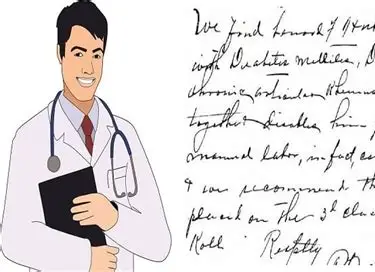
The Punjab and Haryana High Court has mandated clear medical prescriptions across India, citing patient safety and the fundamental “right to life.”
Justice Puri’s ruling directs handwriting training for doctors, medical students and a two-year deadline for digitised prescriptions. Until then, doctors must write in block letters.
The judge observed that there is an urgent need for clear prescriptions by doctors and handwriting lessons must be incorporated into medical education.
Despite advances in technology and the invention of superfast computers, handwritten medical prescriptions remain constant across India.
Bad handwriting of doctors who are so busy that they quickly scribble illegible prescriptions have long been an object of funny memes and jokes. Many of these prescriptions are difficult to comprehend, often decipherable only by pharmacists and people who raise significant concerns for patient safety.
Seeing this, the Punjab and Haryana High court in India had a recent ruling in favour of its citizens and has mandated on the urgent need for clear prescriptions and that handwriting lessons be incorporated into medical education. The government has also been directed to implement digitised prescriptions within two years.
Until then, all prescriptions must be written clearly in capital letter to prevent confusion and potential health risks. The court gave this decision in connection with “right to life” under Article 21 of the Indian Constitution, as reported by the BBC.
In his order, Justice Puri directed the government to ensure that medical students receive handwriting training as part of their curriculum and set a two-year time frame for digitised prescriptions to be widely adopted.
Until technology is fully in place, he instructed doctors to write prescriptions in block letters that can be read without doubts.
During a bail plea for a rape, fraud and forgery case, Justice Jasbirpreet Singh Puri, did not find a single word in the medico-legal report readable. Calling the report “incomprehensible”, he observed that the illegibility itself was a matter of grave concern for the medical system.
Justice Puri pointed out that patients have a fundamental right to legible medical prescriptions, warning that an unclear note, could mean all the difference between proper medications and a medical blunder.
In larger cities and towns, digital prescriptions are becoming more common, but in smaller towns and rural areas, unclear handwritten prescriptions remain a major problem.
Previous court rulings in various Indian states have also expressed concern about writing illegible medical notes and prescriptions, noting that poor writing has compromised patient care. Internationally, research has linked sloppy handwriting to thousands of preventable deaths each year.
For example, a 1999 report from the Institute of Medicine in the United States estimated that poor handwriting contributed to about 7,000 deaths annually due to medical errors. In Scotland, a patient suffered chemical injuries after being given the wrong medication because of prescription confusion.
Efforts from both the government and healthcare workers is required to address the ongoing issue regarding illegible handwritten prescriptions. Official guidelines now recommend that prescriptions be written legibly, in generic names and capital letters.
While urban centres are gradually moving towards printed or digital prescriptions, widespread adoption remains a challenge. Ensuring clear communication in medication for patient safety but also to avoid medication error that can lead to serious, sometimes fatal consequences.
- The Times of India report






